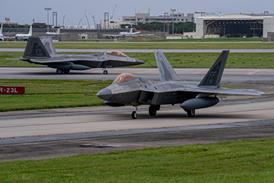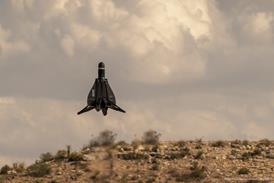Five years ago, the regional turboprop market looked dead in the water. ATR’s order book stood at just 10 in 2003. But since then the Toulouse-based company has undergone a huge turnaround, driven by the pressing need for fuel efficiency which has ultimately won out in the battle between cost control and passenger perception. Much of the ATR sales increase has been at the expense of rivals offering regional jets.
Last year it sold 113 ATR-42 and -72 turboprops, and since 2003 its deliveries more than quadrupled to 44 and its revenues have doubled, reaching $1.1 billion in 2007. ATR chief Stephane Mayer says: “ATR is now a solid company, which was not the case in 2002 or 2003, when the question was how to remain profitable with such a low number of aircraft being produced. This is not a situation where you can consider your long-term future; you are asking what you should do in the next six months.”
The ATR chief, who took up his position last June, is determined to cement the manufacturer’s comeback by accelerating studies into a more efficient and higher-capacity twin turboprop family. With a background in economics, engineering and politics, private pilot Mayer is well-equipped for the challenge.
He says the three fundamental pillars of ATR’s long-term aircraft development strategy are focussed on cutting emissions and operating costs, taking a family approach and satisfying a growing call for higher capacity aircraft. In 2004 the 50-seat ATR 42-500 accounted for 55% of ATR’s new aircraft orders, but between 2005 and 2007 the larger ATR 72 grew to represent an 85% share.
ATR is therefore exploring the potential of a new family with at least two members at each end of the 70- to 98-seat range. Mayer is confident of the market for the first two family members, but he is unsure whether sufficient demand exists to justify a third, 50-seat variant which would have to be significantly cheaper than the 70-seat aircraft.
“If there is a market, we would prefer to propose three. The question is whether we want to stay in the [50-seat] market and if there is a market or a business case. Can we address both optimisation to the higher seat market and keeping the smaller variant cost-effective? If the answer is yes, then we will do it, but I am not sure it is possible. As with any development, we will have to prioritise,” says Mayer.
 |
|---|
Bombardier recently indicated that it plans to end production of its 37-seat Q200 and 50-seat Q300 aircraft. With the departure of its main competitor from this segment, Mayer says ATR may be able to convince carriers to switch their 50-seat allegiance, strengthening the potential market at the lower end of the capacity spectrum.
Whether ATR opts for two or three members, Mayer says the new family will boast a wide range of improvements: “It might look like an ATR, but it will be almost a new generation. If you change the fuselage, the wings and the engines, it becomes a new aircraft.”
Mayer briefly refers to the project as “the -900”, but he stresses no name has been chosen. He says objectives for the study are being set and the next phase will explore how to meet these targets.
ATR is aiming to deliver 15-20% efficiency gains through the new family, which is slated for service entry between 2015 and 2020. Mayer says these savings will be achieved through a new engine, weight-saving composites and improved aerodynamics which ATR will develop using the latest computer generated models. The new family will also have lighter seats and improved cabin comfort.
“Taking our customers’ needs into account, we are accelerating the pre-study phase. Like every project you have to make a business case. The market is there, but the dollar is where it is too so we have to be careful,” says Mayer.
 |
|---|
The new family will act as a successor to the ATR 42-600 and 72-600, which are slated to enter service in 2011. Mayer does not believe that the prospect of a new aircraft family will impact demand for the -600, as some airline cannot afford to hold off on their fleet renewal until the new product is available.
Last year ATR and Bombardier sold a combined total of 220 turboprops, giving evidence of an upsurge which is difficult for potential rivals to ignore. Embraer is considering re-entering the turboprop sector, Chinese manufacturer Xian Aircraft plans to expand its MA-60 turboprop family and India is researching a 50- to 90-seat turboprop family. Mayer believes these studies illustrates that last year’s record order intake is indicative of a longer term trend.
He says: “This is a sign that last year’s orders were not only a short-term firework, but a long-term trend of the market for more turboprops. Clearly it means that we have now a very strong and long-term market, which is encouraging for us.
“If there are five turboprop manufacturers instead of two – as was the case ten years ago - we will have smaller part of the pie, but we clearly believe that we have the strength to keep our leadership.”
ATR’s future products will also face competition from new jet entrants, but Mayer says: “If the new jets decrease their operating costs, we want to keep our competitive advantage. We need to work on an even more economic turboprop and that’s how the new entrants in the jet market influence our product strategy.”
Despite his unerring belief in ATR’s strategy and product development plans, Mayer poses one poignant question. He asks: “When a barrel of oil was between $50 and $100, the ATR was very affordable and better than the others. Now we are talking $150, which is quite a recent trend, the question is why can we still afford air transport?”
Source: Flight International























